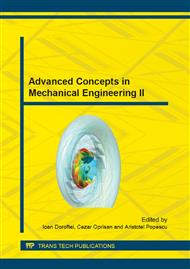p.28
p.34
p.40
p.46
p.51
p.57
p.63
p.69
p.75
Influence of Cooling Rate on Metallographic Structure for Gray Iron, in the Case of Modification with a Mechanical Mixture of Al and FeSiCaMg
Abstract:
After the formation of graphite in molten iron starts its dissolution phenomenon in the liquid metal matrix. The inoculants master alloys FeCaSiMg was mechanically mixed with aluminum, a superficial active element that concentrate on metal matrix - inoculant interface, increasing the graphite surface, which dissolves with greater speed in the liquid metal matrix. In the case of smaller cooling rates (parts with great wall thickness) the former compact – spheroidal graphite inclusions significantly reduces its degree of compactness, which results in the decrease of mechanical strength.
Info:
Periodical:
Pages:
51-56
Citation:
Online since:
October 2014
Price:
Сopyright:
© 2014 Trans Tech Publications Ltd. All Rights Reserved
Share:
Citation:


